
Today’s topic is my favorite event “Hotaru-gari”.
On quiet summer nights in Japan, you might spot faint glowing lights gently floating through the air.
This dreamy scene comes from fireflies—known as hotaru in Japanese—and enjoying their dance is part of a beloved seasonal activity called hotaru-gari or “firefly viewing.”
Despite the term “gari” meaning “hunt,” hotaru-gari doesn’t involve capturing fireflies. Instead, it’s about peacefully admiring them as they shine briefly in the dark.
Since fireflies only live a short time after becoming adults, many Japanese people associate them with fleeting beauty and a quiet, nostalgic sorrow.
In this article, we’ll explore what hotaru-gari is all about, when and where you can enjoy it, and why fireflies hold such a special place in Japanese culture.

By the way, the Scottish folk song Auld Lang Syne is known as “Hotaru no Hikari” in Japan and is often sung at graduation ceremonies.
This is a bit of trivia.
What Is Hotaru-gari?

I used to enjoy Hotaru-gari every year!
I have fond memories of going out with my family to the river deep in the mountains on June nights.

Speaking of which, didn’t we all go firefly viewing as a family two years ago?
“Gari” Doesn’t Mean Catching Them?
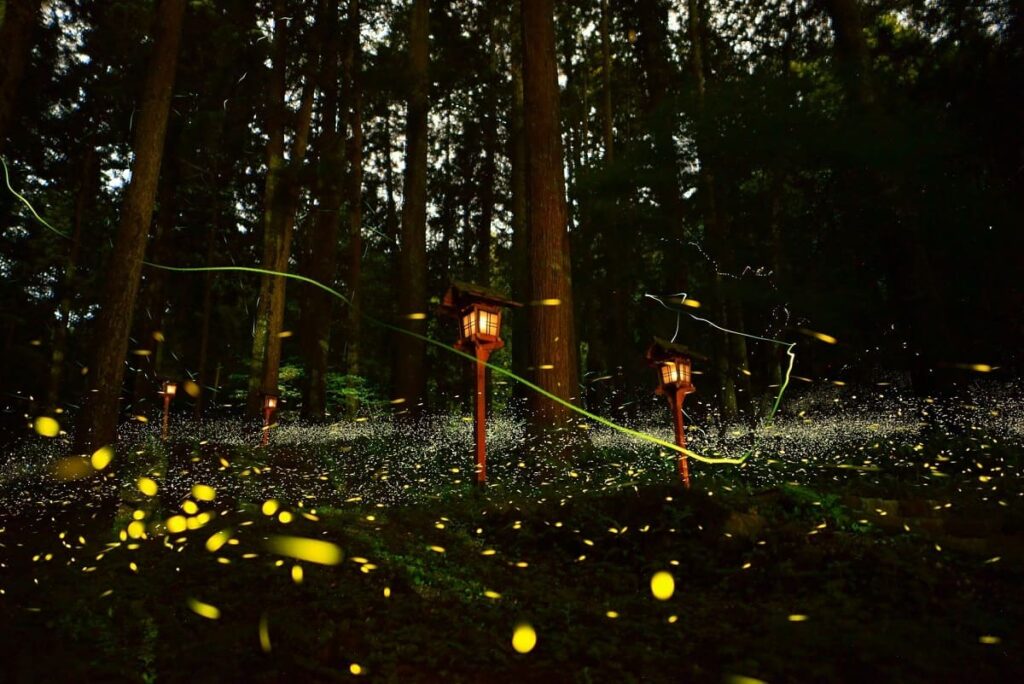
The word hotaru-gari / 蛍狩り might sound like it involves catching fireflies, but that’s not the case.
In modern Japan, the activity is purely about watching and appreciating fireflies in their natural environment—no nets required!

For example, we say “momiji-gari / 紅葉狩り” (autumn leaf viewing), but it’s not like we actually collect the leaves.
People gather near rivers and rice fields during early summer nights, quietly observing these small glowing creatures as they flicker through the darkness.
It’s a meditative, almost spiritual experience that photos and videos can’t truly capture.
The Bittersweet Beauty of Firefly Light

Fireflies have very short lives as adults—often only one to two weeks.
This brief lifespan adds a sense of melancholy beauty to hotaru-gari. Their soft glow in the warm night air evokes strong emotions, from nostalgia to gentle sadness.
In Japanese culture, such fleeting beauty is deeply valued and is known as “mono no aware”—an awareness of impermanence that makes something more precious.
A Long History of Firefly Admiration

Fireflies have been appreciated in Japan for over a thousand years.
By the Heian period (around the 10th century), people were already viewing fireflies as a symbol of summer.
Famous author Sei Shonagon even mentioned fireflies in The Pillow Book, one of Japan’s oldest works of literature.
Later, in the Edo period, firefly viewing became a common evening pastime for people of all classes.
Best Time and Places to See Fireflies
Late May to Early June Is Peak Season

The best time for hotaru-gari is between late May and early June, depending on the region.
Warm, humid nights with little wind are ideal for spotting fireflies, especially just after sunset (around 7–9 p.m.).
You’ll have the best luck on cloudy or moonless nights, when the fireflies’ glow is more visible against the dark sky.

Since mosquitoes tend to be active around this season, it might be a good idea to avoid exposing too much skin.
Famous Viewing Spots Attract Crowds
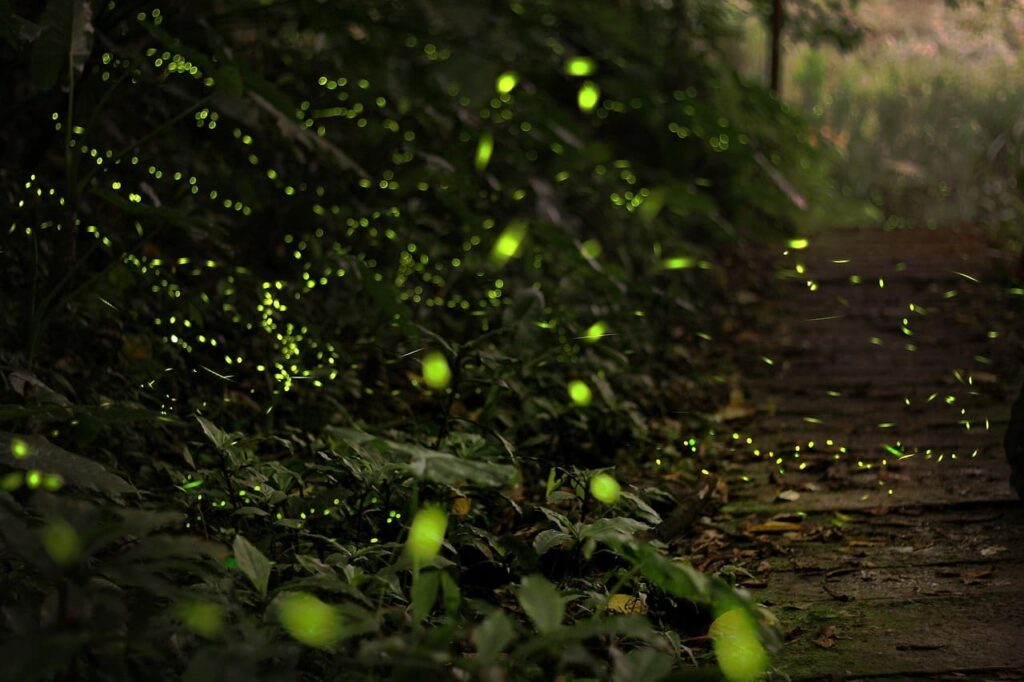
Japan has many well-known firefly viewing locations.
For example:
- Tadasu-no-Mori Forest at Shimogamo Shrine (Kyoto)
- Kugayama Hotaru Matsuri (Tokyo)
These natural areas provide clean water and lush greenery—perfect habitats for fireflies. During peak season, they’re filled with families and couples admiring the enchanting scenery.
Japan’s Common Firefly Species
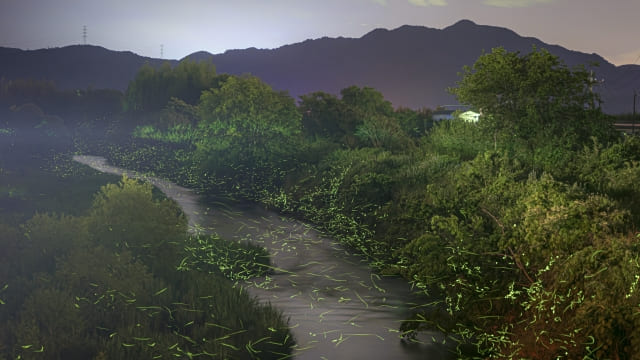
Japan is home to around 50 types of fireflies, but the most common are:
| Genji-botaru (Luciola cruciata) | Large with bright, slow-pulsing light. Found near flowing rivers. |
| Heike-botaru (Luciola lateralis) | Smaller, flickers more rapidly, common in rice fields. |
| Hime-botaru | Lives in mountain forests, emits twinkling flashes of light like tiny stars. |
Each species has its own unique charm and glow patterns.

I had no idea there were as many as 50 species of fireflies in Japan!
Why Fireflies Are a Symbol of Japanese Summer
Hotaru Motifs on Yukata and Uchiwa

Fireflies are not just real—they’re a popular summer motif in Japanese design.
You’ll often see them on yukata (casual summer kimono) and uchiwa (traditional fans), symbolizing the quiet beauty of the summer night.
Their light evokes a sense of peace and nostalgia that fits perfectly with seasonal festivals.
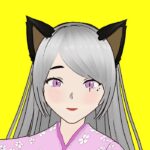
This yukata fabric with the firefly pattern—I’ve got my eye on it! Isn’t it super cute?

There’s also a type of teacup called “hotaru-sukashi” that has delicate carvings resembling the glow of fireflies when you pour tea into it.

Yes! They are so beautiful, too!
Literature and Culture: Fireflies in The Pillow Book
As mentioned, fireflies have long been a literary and poetic symbol in Japan.
In The Pillow Book, author Sei Shonagon wrote about the beauty of fireflies as part of a list of elegant things in life.
Their mysterious, soft light continues to inspire art, poetry, and seasonal customs to this day.

It’s kind of amazing to think that people were already enjoying firefly viewing back in the Heian period!
A Summer Sake Named “Hotaru”
Did you know there’s even a Japanese sake named after fireflies?
The summer-limited “Hotaru” sake is a light and refreshing junmai rice wine, designed to pair with warm evenings and seasonal cuisine.
Just like the fireflies it’s named after, this sake offers a fleeting but memorable experience.
A perfect way to end an evening of firefly viewing!
Hotaru-gari Q&A
- QWhat are the manners or rules for hotaru-gari?
- A
Avoid loud noises, don’t use bright flashlights, and never try to catch or touch the fireflies. Let’s enjoy them respectfully.
- QCan I see fireflies on rainy days?
- A
Fireflies are less active on rainy or windy nights. Try to go on warm, still evenings after a dry day.
Final thoughts about Hotaru-gari
Hotaru-gari is more than just watching fireflies—it’s about experiencing a magical, fleeting moment of summer.
Their soft, mysterious glow has captivated Japanese hearts for generations, reminding us to slow down and appreciate beauty that doesn’t last forever.
From historical poems to modern festivals, fireflies continue to shine in Japan’s cultural imagination.
So if you’re in Japan between May and June, don’t miss the chance to enjoy this quiet, unforgettable tradition.
Let the light of the fireflies guide you into the heart of a Japanese summer.

If you are interested in Japan, you may love these games!
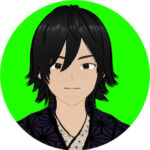
Yes! Let’s play!

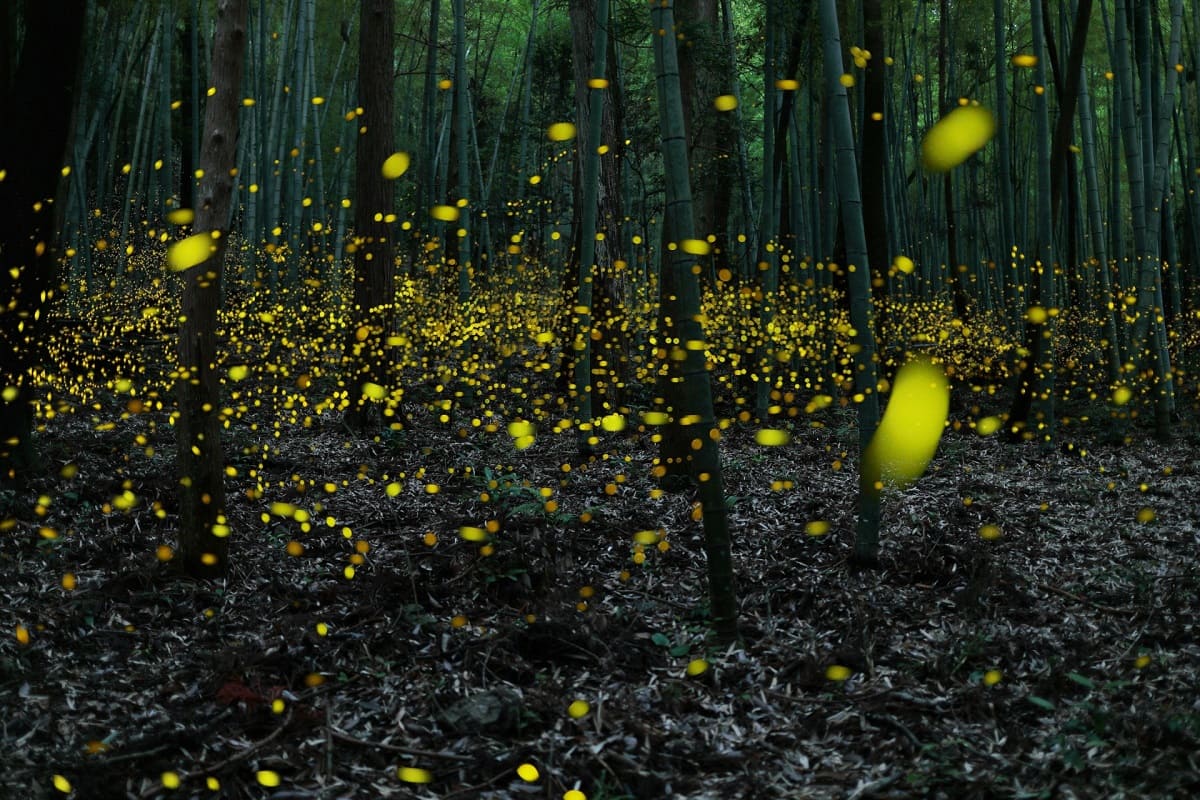





Comments